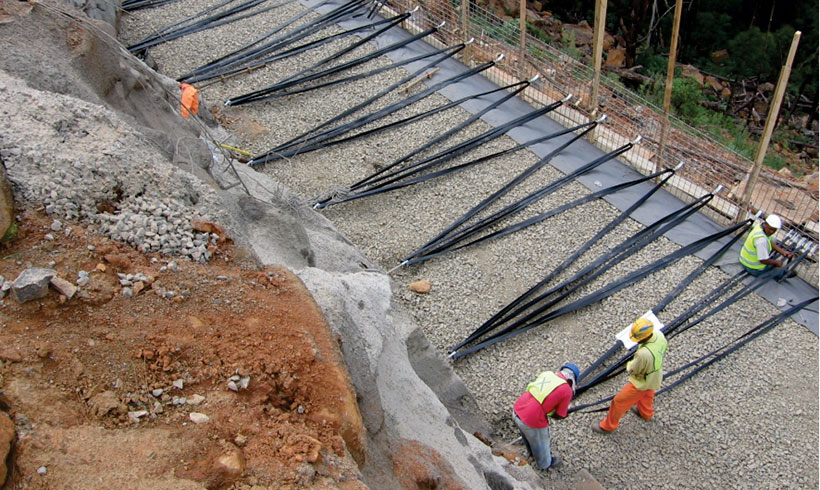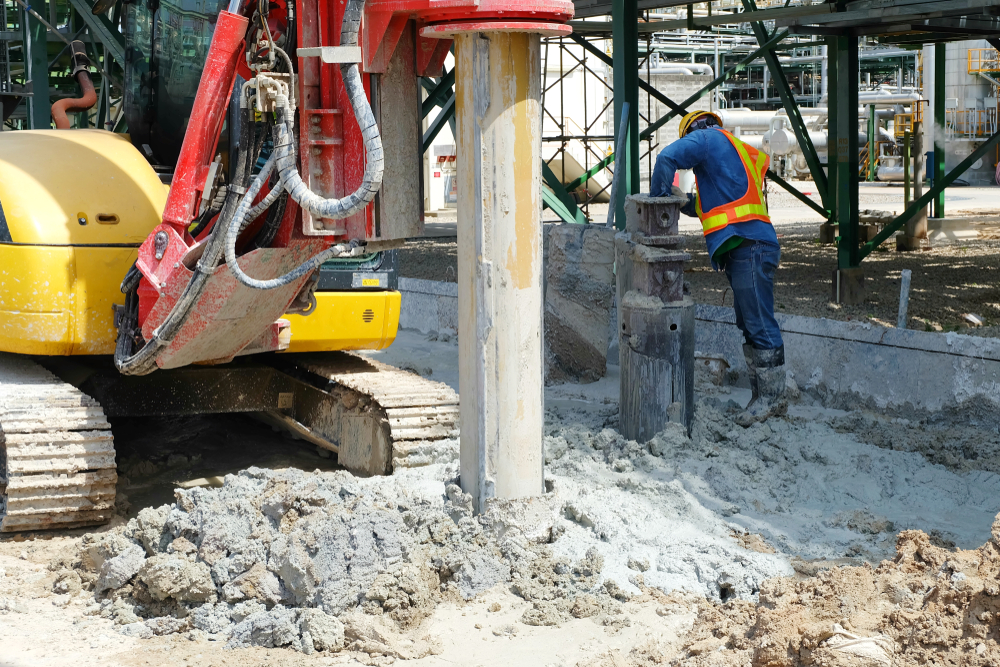The Best Guide To Geotechnical Engineering For Construction Projects
The Best Guide To Geotechnical Engineering For Construction Projects
Blog Article
Rumored Buzz on Geotechnical Engineering For Construction Projects
Table of ContentsThe 9-Second Trick For Geotechnical Engineering For Construction ProjectsNot known Facts About Geotechnical Engineering For Construction ProjectsGeotechnical Engineering For Construction Projects Can Be Fun For AnyoneWhat Does Geotechnical Engineering For Construction Projects Mean?Geotechnical Engineering For Construction Projects for Dummies
During the examination, it is crucial to drill at the required deepness and the required number of openings as per the referral of the Canadian Structure Design standard. Sometimes, the owner may save some Geotechnical Investigation price yet wind up investing even more than the expected throughout the building expense.The responsibilities of the geotechnical expert include offering material screening for construction assistance. Geotechnical Engineering for Construction Projects. Geotechnical designers analyse all the field examination reports to guarantee that building is taking place based on the job specification. Throughout building, a confirmatory examination for dirt compaction is done on-site to make certain that no future negotiation happens
After the concrete is poured -7 days and 28 days- examinations are carried out on concrete samples accumulated from the site to ensure that the concrete put meets the design criterion. Asphalt core is taken after the Asphalt is laid and compacted to validate that it fulfills the design criterion. All lab test records are evaluated by the Geotechnical Engineer to make sure that it meets the job requirements.
The Basic Principles Of Geotechnical Engineering For Construction Projects

Geotechnical engineering plays an important function in making certain the stability of building tasks. Discover just how it influences style and total job success. Geotechnical design is an important branch of civil design that focuses on comprehending the behaviour of planet materials, such as soil and rock. It entails analysing subsurface conditions to make certain that a structure's structure or framework is secure and secure.

For a reliable foundation and a smooth building procedure, depend supply the expertise you need. Get in touch with to get specialist guidance and geotechnical services tailored to your following project.
Geotechnical Engineering For Construction Projects for Beginners
When beginning on a land growth project, comprehending the ground beneath your feet is as essential as the frameworks you plan to develop above it. Our Geotechnical Design group analyse the ground, guaranteeing it appropriates for the recommended advancement while supplying you with the details called for to satisfy your task objectives.
Geotechnical Engineering looks at the formation of the ground, as it is the structure blocks for all jobs. Where frameworks need to be made relative to the ground conditions; ground conditions click here for more (e.g., soft ground) may call for reinforcing depending on the dimension of the intended structure. Prior to structure, you need to understand about the groundwater, soil framework, check this site out and liquefaction likelihood of your land.
For sites that are not linked on the regional authority facilities added website examinations would be needed to offer technological inputs for on-site stormwater and wastewater. We have actually experienced Geotechnical Designers based in each workplace, sustaining your geotechnical needs nationwide. Reach out to us to discuss just how we can sustain your following task.
These records are customized to satisfy the particular needs of a job and include layout specifications and guidance for the building of a variety of manufactured frameworks. In addition to providing consultancy solutions covering areas such as slope security and load-bearing capabilities for different materials, these engineers embark on r & d tasks to improve methodologies, equipment, materials expertise and analysis covering entire lifecycles.
Unknown Facts About Geotechnical Engineering For Construction Projects

Rates of pay generally increase as your knowledge and skills expand, with guidelines directing to a graduate beginning income of between 18,000 and 28,000 per year in the UK. This increases to 26,000 to 36,000 with a few years of experience and then getting to 40,000 to 60,000+ for senior, chartered or master engineers.
With the best application it is feasible to master look these up the profession and gain access to a tough yet gratifying and important occupation. A geologist would require to re-train to end up being a geotechnical designer, although there is lots of cross-over between both occupations, which can make this less complicated - Geotechnical Engineering for Construction Projects. Geologists require to have an understanding of soils, rocks and other materials from a scientific perspective, while geotechnical designers story their understanding of issues such as soil and rock auto mechanic, geophysics and hydrology and use them to engineering and environmental projects
When beginning, these engineers will certainly have a tendency to function on much less intricate projects, accumulating knowledge and experience prepared for even more tough work later on. Geotechnical engineers tend to specialise in specific locations as they grow in experience, concentrating on particular infrastructures such as railways, roads or water. These designers also work with eco-friendly power, offshore and onshore oil and gas, nuclear power, and much more.
Geotechnical Engineering For Construction Projects - Questions
The time taken to end up being a geotechnical engineer depends on where you are based, where you research study and what degree of education and learning you want to obtain before getting in the workplace. Generally-speaking it takes 3-4 years to get to the basic needs to start an occupation as a geotechnical engineer.
These operations allow professionals to examine a host of dirt auto mechanics consisting of weight, porosity, void-to-solid bit ratio, leaks in the structure, compressibility, maximum shear strength, birthing capacity and contortions. If the framework requires a deep foundation, designers will certainly utilize a cone infiltration examination to approximate the amount of skin and end bearing resistance in the subsurface.
When assessing a slope's balance of shear stress and shear stamina, or its capacity to withstand and go through motion, rotational slides and translational slides are commonly thought about. Rotational slides fall short along a bent surface area, with translational slides happening on a planar surface area. An expert's goal is to identify the problems at which an incline failing could happen.
Often, findings suggest that a website's dirt ought to be treated to improve its shear toughness, tightness and permeability before style and building. When it comes time to outline structure plans, experts are increasingly concentrated on sustainability, more particularly exactly how to minimize a structure's carbon footprint. One technique has actually been to change 20 percent of a foundation's concrete with fly ash, a waste product from coal fire power plants.
Report this page